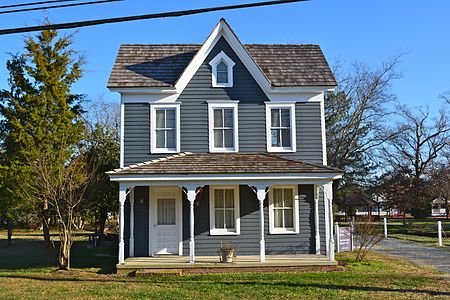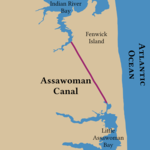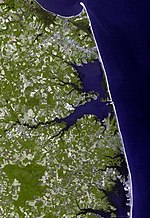Tunnell–West House
Delaware Registered Historic Place stubsGothic Revival architecture in DelawareHouses completed in 1868Houses in Sussex County, DelawareHouses on the National Register of Historic Places in Delaware ... and 2 more
National Register of Historic Places in Sussex County, DelawareUse mdy dates from August 2023

The Tunnell–West House is a historic house at 39 Central Avenue in Ocean View, Delaware. The 2+1⁄2-story wood-frame house was built sometime between 1868 and 1890, and is a distinctive local example of vernacular Gothic Revival style. Elements of the building's interior are particularly well preserved, including door hardware and trim elements. The local historical society is adapting the house for use as a museum.The house was listed on the National Register of Historic Places in 2012.
Excerpt from the Wikipedia article Tunnell–West House (License: CC BY-SA 3.0, Authors, Images).Tunnell–West House
Central Avenue,
Geographical coordinates (GPS) Address Nearby Places Show on map
Geographical coordinates (GPS)
| Latitude | Longitude |
|---|---|
| N 38.548055555556 ° | E -75.089444444444 ° |
Address
Central Avenue 40
19970
Delaware, United States
Open on Google Maps








